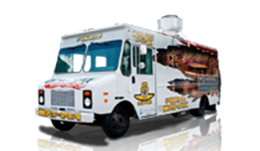GVWR vs GCWR and Other Payload Terms Every Trucker Should Know

The trucking industry is an indispensable part of the American economy. They provide services such as local, regional, and interstate hauling. They can also feed people on the streets as versatile food trucks. From construction sites to mines to city streets, highways, and off-roads, semi-trucks have been a piece of essential vocational equipment.
Since big rigs vary in brands, sizes, types, and uses, people may be overwhelmed by a lot of payload terms and trucking terminologies. But if you are starting to be a part of the trucking industry, you must learn about GVWR versus GCWR. These two are technical terms that you need to understand when buying mobile trucks. Plus, there are also other payload terms every truck operator and driver should know.
What’s Inside
What is GVWR?
GVWR stands for Gross Vehicle Weight Rating, which refers to the greatest weight a semi-truck can carry, haul or transport. GVWR is totally different from a vehicle’s weight. What it defines is the upper limit of load that a semi-truck can safely haul. These include the cargo, fuel, hitch, and passengers. A truck’s weight can change, but its gross vehicle weight rating is constant.
GVWR is a fixed number set by truck manufacturers based on trucking regulations. It aims to make the roads safer. If truckers get this measurement wrong, they can damage the vehicle and risk people’s lives. GVWR is also a significant number in vehicle classifications. The US Federal Government categorizes motor vehicles based on their GVWR as follow:
| Vehicle Class | Category | GVWR |
| Class 1 | Light Duty | 6,000 lbs |
| Class 2 | Light Duty | 6,001 to 10,000 lbs. |
| Class 3 | Medium Duty | 10,001 to 14,000 lbs. |
| Class 4 | Medium Duty | 14,001 to 16,000 lbs. |
| Class 5 | Medium Duty | 16,001 to 19,500 lbs. |
| Class 6 | Medium Duty | 19,501 to 26,000 lbs. |
| Class 7 | Heavy Duty | 26,001 to 33,000 lbs. |
| Class 8 | Heavy Duty | 33,000 lbs. and up |
The United States Department of Transportation (DOT) requires a Class A Commercial Driver’s License (CDL) to legally drive a heavy-duty vehicle.
To find a semi-truck’s GVWR, truckers can refer to the owner’s manual. They are also labeled inside the truck’s door frame. To make it easier, most manufacturers include the GVWR as basic information when looking at the exact make, model, and year of a vehicle.
What is GCWR?
GCWR stands for Gross Combination Weight Rating. It is the greatest weight rating allowed for a semi-truck and an attached trailer. The weight rating is equal to the weight of the vehicle and the weight of the loaded trailer combined. It is very important to determine the GCWR before towing because it is the safest weight a tow truck can lift or pull.
The basic way of calculating the GCWR is by adding the gross vehicle weight rating (GVWR) and the gross trailer weight (GTR). These two weight ratings can give truckers a tough estimate of the GCWR. Yet, you will also need to include the weight of the cargo and the passengers to get the most accurate GCWR. This also includes adding the tongue weight of the trailer.
The safest weight to calculate the GCWR is to use a public scale to get a precise weight rating. It may be time-consuming to do so, but it is something that ensures safety. It is extremely dangerous to tow a truck and trailer that exceeds the GCWR. Besides the risk of damaging the truck, trailer, and tow vehicle, you are also taking people’s lives and properties in danger.
What is the Difference Between GVWR and GCWR?
Every trucker has to remember that GVWR and GCWR are two different terms. GVWR is a cap on how much a semi-truck weighs by itself. The term is especially relevant when a semi-truck needs to pull a trailer loaded with heavy cargo. The GVWR should always exceed the loaded trailer’s weight.
On the other hand, GCWR takes into account the trailer’s weight besides the semi-truck. This term is especially important when towing a truck with an attached trailer. Tow trucks should always know their towing capacity. It is the greatest amount of weight that a tow truck can lift or pull. GCWR is the combination of the weight of the curb, cargo, and passengers for both the trailer and truck to be towed. The towing capacity should always exceed the GCWR.
Other Payload Terms
There are other payload terms relevant to a truck’s GVWR and GCWR.
Curb Weight
It is the weight of an empty semi-truck without cargo or a passenger. The weight includes the fluids needed to operate the vehicle. These include brake fluid, coolant, gas, oil, and wiper fluid, etc. The curb weight is important for the fuel efficiency and performance of a semi-truck. The lighter the curb weight, the less fuel a semi-truck consumes.
GAWR (Gross Axle Weight Rating)
It is the greatest weight distribution that a semi-truck’s axles can support. A semi-truck has two or more axles located in the front and rear part of the vehicle. Each axle can support a specified weight rating. The GAWR is the combination of the specified weight ratings for all the front and rear axles on a semi-truck.
GTR (Gross Trailer Weight)
It is the actual weight of the trailer together with the cargo, equipment, fluids, passengers, and everything in it. This payload term is essential to know for a trucker not to exceed hauling more than the permissible load weight.
Payload Capacity
It refers to the extra cargo weight that a semi-truck can safely carry besides in reference to its curb weight. The payload can be anything from a cargo load, luggage, or passengers on the truck.
Tongue Weight
It is an important payload term to know when towing a trailer. It is the weight of the part of a trailer that is attached to the hitch. The hitch is the device that connects the tow vehicle and trailer together.
There are five standard types of hitches used to tow trailers. These are:
- Bumper Hitch or Mounted Tow Ball
- Fifth Wheel Hitch or a Kingpin Mechanism
- Gooseneck Hitch or Tow Bars
- Pintle Hitch or a Hooking System
- Weight Distribution Hitch or a Wheelbarrow Lift
Tongue weight is the downward force that the trailer exerts on the hitch. Most experts agree that the safest tongue weight is 9 to 15 percent of the GTW. If the tongue weight is too little, it may result in a lift on the back end of the trailer which is very dangerous. This condition is otherwise known as trailer sway.
Ready to jumpstart your trucking business? Make sure to read the following articles:
- Everything You Need to Know When Buying Semi Trucks
- Semi-Trailer Dimensions and Laws You Should Know to Avoid Fines and Penalties
- Semi Truck Lighting Regulations in America: What Every Trucker Should Know
And to find the best deals on semi trucks, visit our website here.







